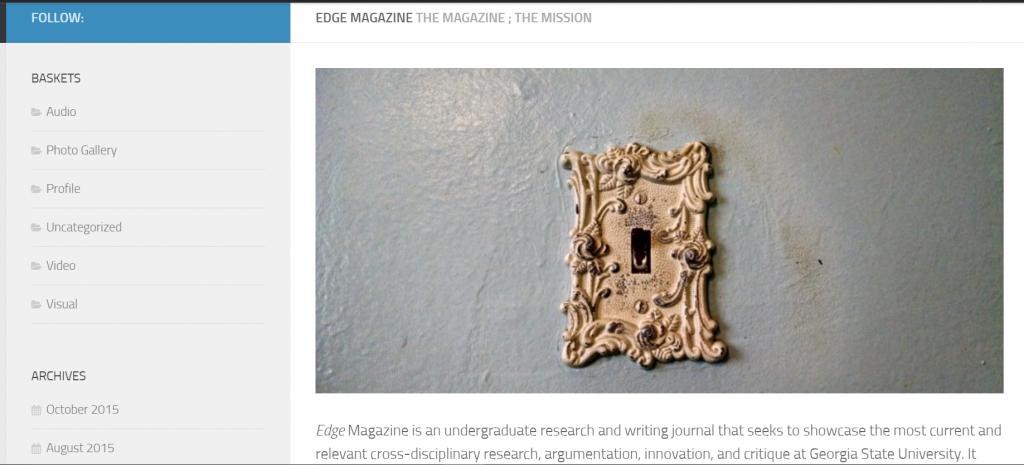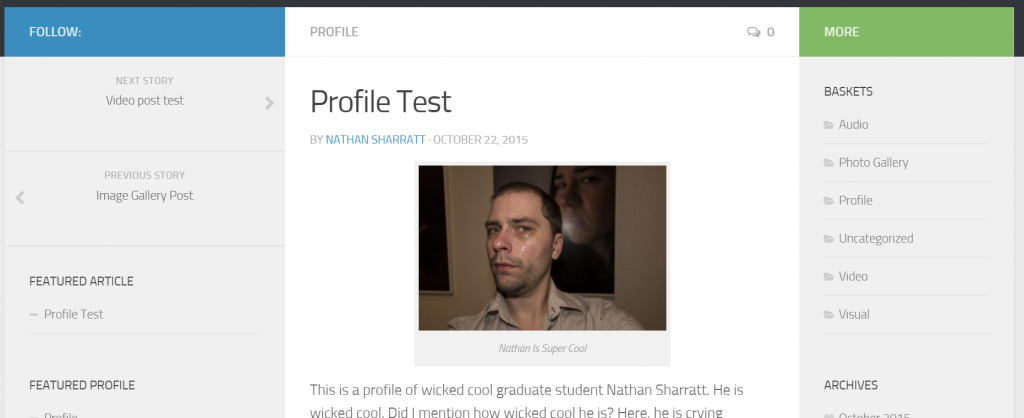I have been writing a bit about Edge Magazine here on my blog, as it is my major SIF project this year. Despite the fact that I have been an editor at Hybrid Pedagogy for over 3 years, starting a new editing process is quite the puzzle.
There is a lot to think about as we get the journal off the ground. Most of what our team is wading through involves one big question: What?
What is our edge?
The biggest question for any publication is this. What is our edge? Who are our audience(s)? Who are we speaking to and why? After several meetings discussing what Edge is for, what it accomplishes, and what it focuses on, we have decided that Edge will be a culture and arts focused multimedia magazine that uses Atlanta as its unifying theme. It will be different than Discovery in that its articles will be shorter, more causal, mostly multimedia driven, with new articles released often. It will be different than The Signal in that it is not a Newspaper that reports, but rather a magazine that has featured undergraduate work.
What is the argument we are making with these articles overall which will set the stage and aesthetic for the magazine?
As Edge begins to develop and take on shape, the hope here is that our argument will become clear to our readers. Of course, our first argument is “Undergraduate work at GSU matters.” And our second argument is “Undergraduate work here at GSU is really cool, innovative, and edgy.” These arguments will be obvious as the first articles go live next Fall. Ultimately though, the answer to this question is a wait-and-see process depending largely on the submissions we get, and the voice the collective students create as we show the world what we can do here at Georgia State.
What is going to make people want to return to read about more work that students are doing at GSU?
This question is also a wait-and-see question as we develop the aesthetic of the magazine. At the moment, if you click the link at the top of this entry, you will see that the magazine is a skeleton with some test posts and a repeat of the same class project that we have been playing with. But as we begin to work on our first submissions (we already have one lined up!), the look and feel of the magazine will begin to take on a polished shape. We do know that the magazine will feature videos, audio recordings, galleries of stills, links out to student work that exists live on the web, and combinations of all these things. It will have the ability to take student work that is exciting and interesting already, and make it more visually appealing for outside readers.
This means, that the student work featured here did not stop at the professor’s desk, but will be published for the world to see, which adds a whole new layer of meaning to student projects on, and off, campus. For a faculty audience, getting to see what students are working on in their courses should be a good reason to keep coming back. And for students, looking at some of the great projects other students have worked on should also be enticing. For readers outside day-to-day life in the University, reading Edge should be a great way to see what students are up to at GSU, and to know that their tax dollars, donations, and moral support are making some waves here in Atlanta.
Much of the above may seem somewhat ambitious, but without lofty ambitions, we don’t move up. Much of the shaping of Edge will be a waiting game, and much of it will shape itself through the process of building. It’s an exciting time to be a student at Georgia State University, and the hope is that Edge will be a beacon that readers can follow in order to discover what wonderful ideas, skills, and initiative students bring forward.



